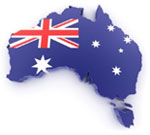 The Therapeutic Goods Administration (TGA) is responsible for the regulation of medicines, medical devices, blood and blood products, and biologicals (including human cell and tissue products) in Australia. In 2011, TGA implemented a tiered, risk-based framework for the regulation of cell and tissue products called the Biologicals Regulatory Framework (BRF). This framework is being phased-in and is expected to be completed by May 2014.
The Therapeutic Goods Administration (TGA) is responsible for the regulation of medicines, medical devices, blood and blood products, and biologicals (including human cell and tissue products) in Australia. In 2011, TGA implemented a tiered, risk-based framework for the regulation of cell and tissue products called the Biologicals Regulatory Framework (BRF). This framework is being phased-in and is expected to be completed by May 2014.
TGA defines a biological as a thing made from, or that contains, human cells or human tissues, and that is used to: treat or prevent a disease, ailment, defect or injury; diagnose a condition of a person; alter the physiological processes of a person; test the susceptibility of a person to disease; or replace or modify a person’s body parts. Products the meet the definition of a biological are then subject to varying degrees of regulation in Australia. Examples of products that meet the definition of a biological, and therefore fall under the BRF, include:
Other therapeutic goods subject to oversight by TGA are biological prescription medicines (e.g. vaccines, plasma derivatives, recombinant products), labile blood and blood components, and haematopoietic progenitor cells used for haematopoietic reconstitution (non-fresh transplants).
Additionally, the following products are not considered therapeutics goods and therefore not subject to oversight by TGA: assisted reproductive technologies; fresh viable organs; fresh haematopoietic progenitor cells; cells and tissues made by a medical practitioner for a single patient under the care of that medical practitioner.
Before biologicals can be legally imported, exported, manufactured or supplied in Australia, the BRF requires that the biological either be included on the Australian Register of Therapeutic Goods (ARTG) or otherwise exempted, approved or authorized. The BRF establishes 4 classes of biologicals based on the risk of the specific product with class 4 biologicals possessing the highest risk. The risk of the biological product is determined by 1) the methods used to prepare and process the products during the manufacture and 2) whether their intended use is the same as their usual biological function. Class 1 biologicals, which present the lowest risk, must be listed in the ARTG and comply with applicable standards. Conversely, a class 4 biological must be approved by TGA, requires submission of a dossier containing safety, efficacy, and quality data, and comply with Good Manufacturing Practice regulations.
Appendix 4 of the Guidance on Therapeutic Goods Order 88 establishes standards for donor selection, testing and minimizing infectious disease transmission for cellular therapy products. Like the United States’ donor eligbility determination criteria, TGA requires manufacturers to review the medical and social history of prospective donors. The testing window for living donors is 7 days which is based on current international requirements and represents the nominal timeframe to collect samples to accurately reflect the donor infectious disease status. However, donor testing samples for HPC products may be obtained within 30 days prior to collection when recipient myeloablative chemotherapy conditioning commences seven days prior to transplant. Infectious disease testing should be performed in according with Table 3 of the appendix. Note that separate requirements for testing timelines and infectious disease testing have been established for deceased donors.
Links to regulations and guidelines are accessible in the External Resources box.